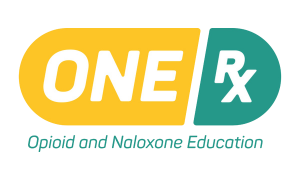
A visit to the pharmacy is a common and frequent occurrence for individuals managing any acute or chronic health care condition. Pharmacists continue to expand their services and expertise beyond medication dispensing to include chronic disease management, immunization, point of care testing and more.
“Community pharmacies across the country provide critical healthcare to patients across the country, particularly in a rural state such as North Dakota,” explained Jesse Rue, PharmD, clinic coordinator for the North Dakota Pharmacy Service Corporation. “For over a decade, About the Patient pharmacies have provided advanced pharmacy-based healthcare to their communities for conditions as varied as hypertension, diabetes, asthma, COPD, and pain management.”
In addition to North Dakota’s more than 70 pharmacies expanding their practices, the Community Pharmacy Enhanced Service Network (CPESN) in South Dakota is developing partnerships to deliver disease management programs and improve quality of life for patients.
| “Pharmacy enhanced services allow pharmacists to care for patients beyond medication dispensing,” agreed Joshua Ohrtman, pharmacist for The Medicine Shoppe in Rapid City, SD. “Enhanced services can include medication reconciliation upon hospital discharge, medication management services, delivery, and specialized packaging.”
Rue expects even greater advancement for integrated care. “Developing programs and capacity to participate in these emerging care models is an area that provides a great deal of pride and excitement within the pharmacy community, and it is expected that this pioneering spirit will continue on into the future.” |
ND Pharmacy Resources
SD Pharmacy Resources
|
Enhancements in technology and the expanded use of telehealth services also expand access in rural areas and allow for increase integration of support and care services offered by community and health care organizations.
“Recently, the program has been investigating how to best utilize emerging technologies such as remote patient monitoring and continuous glucose monitoring,” said Rue. “The About the Patient program feels very strongly that emerging technologies and the development of greater healthcare interoperability software must incorporate pharmacist services to deliver on their great promise to improve the quality and efficiency of care in the future.”
 The added support for chronic disease management from pharmacists also reduces healthcare costs. Ohrtman has seen positive outcomes across the South Dakota network. “With pharmacist intervention, CPESN SD has seen over 100 patients with reductions in blood pressure. In addition, we’ve seen reduced hospitalization rates and improved medication adherence.”
The added support for chronic disease management from pharmacists also reduces healthcare costs. Ohrtman has seen positive outcomes across the South Dakota network. “With pharmacist intervention, CPESN SD has seen over 100 patients with reductions in blood pressure. In addition, we’ve seen reduced hospitalization rates and improved medication adherence.”
Combatting opioid overdose is another area of pharmacy engagement. Naloxone distribution standing orders exist for pharmacists in multiple North Dakota communities and statewide for South Dakota. The Opioid and Naloxone Education (ONE) RX Project is a nationally recognized program developed in North Dakota to help stop opioid misuse and accidental overdose. The program equips pharmacists with free tools to screen patients prescribed an opioid medication and provide education, resources, and support to ensure safe medication use.
